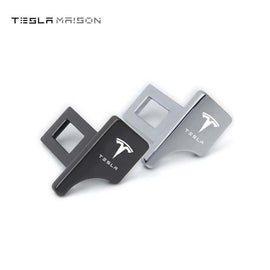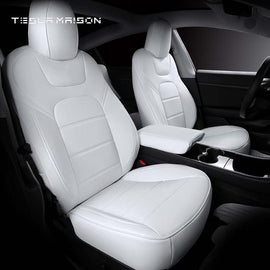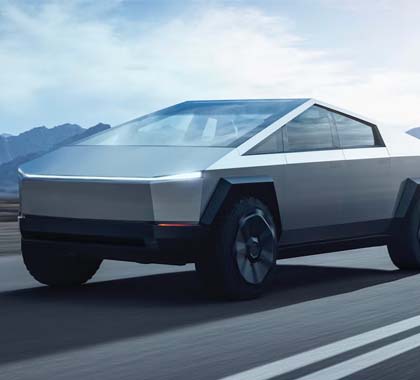Tesla cars come with a plethora of useful and innovative features. A rear camera is one example. It can be controlled using the vehicle’s computer software. Teslas can also be glitchy, as anyone familiar with computers knows.
How do I troubleshoot my Tesla rear camera? Once the problem has been diagnosed, you can use several common fixes to troubleshoot it.
- Scroll Wheel Reboot
- Top Buttons Reboot
- Steering Wheel Pedal and Brake Pedal Replacement
- Complete Power Down and Restart
- Clear Trip information and previous Destinations
- Remove Usb Devices
- Disconnect Bluetooth Devices
- Full-Factory Reset
A non-functioning rear camera is one of the most common issues. But if it's not broken, you can solve the problem with some easy troubleshooting. We will go through them all in detail.
Diagnosing Tesla's Rear Camera Issue
In order to fix your Tesla rear camera, the first thing you need to do is identify the problem.
The camera may stop working in a variety of ways. It is vital to understand the problem. These are some possible symptoms of a Tesla camera malfunctioning:
- Black Screen: Some users have reported that the display on the rear camera displays a black screen when it's activated. The screen remains unresponsive each time the camera starts.
- White Screen:White screen is similar to the blackscreen issue. The display for the car rear camera will become white and show no information. Some people who have had this problem also say that the screen will occasionally go black, and then return to white.
- Display Flickering: Another common problem is the purple flickering of the rear-view camera display. When the reverse switch is activated, you may notice that your rear camera displays a purple flicker, sometimes with a green stripe. This will eventually return to normal, but it can also become black and unresponsive. The rear camera will flicker purple, sometimes with green stripes and either return to normal functionality after a short period of time or turn black and unresponsive.
- Blackout Intermittent: As with the blackscreen issue, a rear camera display in the Tesla will have a completely black or partially-black screen. This happens at random whenever the car goes into reverse or the back camera is engaged. Once the issue has been resolved, the rear camera will work normally again.
Model S cars also have rear camera issues but are much less frequent. Your problem may be unsolvable if you are the owner of a Model X and/or a discontinued Roadster.
8 Common Fixes for Tesla Rear Camera Issues
You can begin troubleshooting after you have determined which problem is plaguing your camera. The solutions in this guide should fix all the rear-view camera issues described above.
If you are experiencing camera issues that seem to be temporary and not frequent, try these 3 solutions to see if one of them can provide a fast fix.
- Repeat the reverse motion of your car
- Turning off and on your vehicle
- Search for and install the latest Tesla firmware update
If you still have problems, please check our list on how to reset your Tesla, reboot it, or clear up common software errors. When performing any of these troubleshooting steps it is important to park the vehicle in a place that's safe.
1. Scroll Wheel Repair
This will soft-reboot the Tesla. This is often enough to solve most issues. If needed, this can be done in the car. The screen will become black, but it will continue to run normally.
To reboot the scrollwheel, hold down both scroll wheel buttons and release after 10 seconds. The touchscreen goes black for about a minute during the system's reboot.
2. Top Button - Reboot
Tesla Model S & Model X only owners can select the top button restart. To activate top button reboot, you must press and hold both buttons on the face of your steering wheel located above the wheels for a total of 10 seconds. It will also reset the dash.
3. Rebooting of Brake Pedal, Steering Wheel Reboot
This is similar but with the addition of the brake pedal.
For this to work, the car needs to be parked. All doors need to remain closed during the whole process.
- Press the brakes and keep the pedal pressed throughout the entire process.
- Hold the scrollwheels down if you own a Model 3 If you own a Model S/Model X then press and hold two buttons just above the scrollwheels as well as the actual scrollwheels.
- Keep holding the buttons in place for at least 10 second. The touchscreen goes black for approximately one minute, as the system restarts.
- After the screen has gone black, keep holding the pedal and button until the screen turns back on.
4. Completing Power Off and Restart
Prior to attempting, you should try a Steering Wheel Reboot. Unless otherwise instructed, you should keep all the doors closed. It is also recommended to perform the reboot in a quiet location so that you can better hear the audio signals activated during the process.
- Remove your foot if it's on the brake.
- Click on the service menu at the top of the screen, and then select the option "Power Off."
- After a while, all screens will go out as well all interior lighting.
- If the car continues to run, wait for all noises to stop.
- If you cannot hear the vehicle due to the surrounding noises, then wait for at least 3 minutes to shut the car down completely.
- To reactivate your vehicle, you must first make sure the car's power is turned off. Then press the brake pedal.
5. Clearing previous destinations and Trip Information
It is important to clear out the trip information from the Tesla computer in order to improve the system's stability and reliability. While this may not be the solution to your problem, you may be able to prevent further problems from occurring.
By swiping away from the list of frequently visited locations, you can delete all satellite navigation data. This will enhance system stability.
6. Remove USB Devices
By removing USBs, you'll prevent any outside interference that could be causing problems. The computers in the car can become overloaded with large data files, such music files, when they are read from thumb drives. System stability will improve by reducing data.
7. Disconnect Bluetooth Devices
Bluetooth devices connected with the car (such as your phone) will upload contacts and other details to the car's computer. In the end, too much additional data can make computer systems unstable.
8. Full Factory Setup
Tesla does NOT recommend that you perform a factory-reset if you get stuck. For a complete factory reset, you can follow the same instructions as "Complete Power Down And Reset". However, instead of choosing "Power Off", choose "Factory Reset". Complete the rest of the steps.
Remember that a factory-reset will erase your entire personal data. Do not do this unless it is the only option.
If These Solutions Don't Fix Your Tesla's Back Camera Issue
If none of these methods work, they will at least help you eliminate other variables, improve your reliability, and avoid future issues.
In the event that you are not able resolve your issue using the provided methods, then you will have to search for a Tesla Mechanic. Alternatively, you could simply wait to see if a new software upgrade fixes the problem.






























